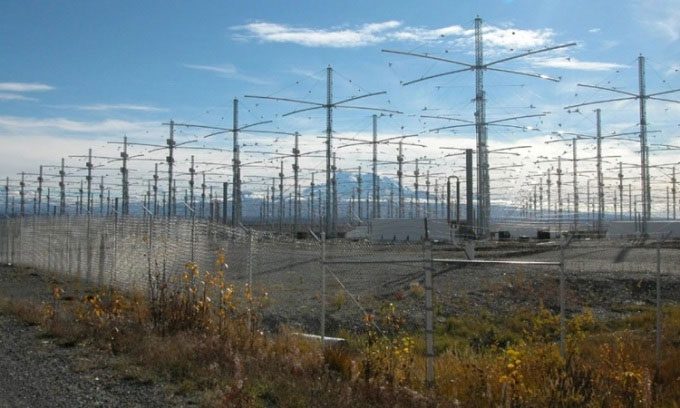A research team will test firing radio waves at the asteroid 2010 XC15, which is 152 meters in diameter, as it passes near Earth on December 27 to study its structure.
Scientists from the University of Alaska Fairbanks (UAF) and NASA aim to examine asteroid 2010 XC15 to prepare for potential threats posed by Apophis. Apophis is a hazardous asteroid that could collide with Earth in 2029. Researchers believe that on April 13, 2029, Apophis will come closer to Earth than the Moon, by more than ten times.

The network of 180 antennas of the HAARP program. (Photo: NBC)
The research team will use HAARP (High-Frequency Active Auroral Research Program) to transmit 9.6 megahertz radio waves to asteroid 2010 XC15. HAARP is a U.S. government-funded research program aimed at studying the ionosphere (a layer of Earth’s atmosphere located at an altitude of 80 – 643 km). However, this will be the first time the system is applied to examine an asteroid.
Astronomers will fire radio waves into space to detect asteroids, determine their shapes, trajectories, surface structures, and many other characteristics. For this purpose, they typically use radio waves in the S (2.000 – 4.000 MHz) or X (8.000 – 12.000 MHz) frequency bands. To probe 2010 XC15, the research team will employ a much lower frequency (9.6 MHz) and longer wavelength since this time, they want to explore not only the surface of the asteroid but also its internal structure. Information about the internal structure could reveal details about the potential damage the object could cause, helping scientists devise effective countermeasures.
Mark Haynes, the lead researcher and NASA engineer, explained that the longer wavelength can penetrate the inner layers of the object. If the mass distribution is understood, the team can develop appropriate means to impact the asteroid.
On December 27, the distance between 2010 XC15 and Earth will be about twice the distance between Earth and the Moon. HAARP will transmit 9.6 million radio waves per second across this distance. The process will repeat every two seconds. This experiment is crucial because if researchers can successfully probe 2010 XC15 using low-frequency radio waves over a long distance, they can apply similar methods to analyze Apophis.
Even though Apophis may pass close to Earth in 2029, if it were to collide, the consequences could be extremely severe. Apophis would cause damage within a radius of several hundred kilometers around the impact area. The energy released would be equivalent to over 1,000 megatons of TNT, or the equivalent of dozens or even hundreds of nuclear bombs.


















































